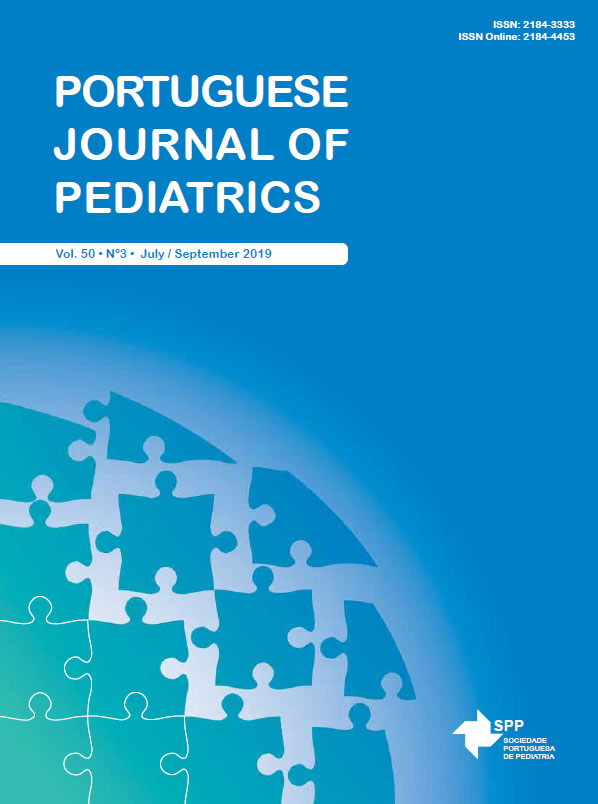Growth recovery in acquired hypothyroidism presenting with height velocity decreasing
Date of submission: 29-07-2018 | Date of acceptance: 25-06-2019 | Published: 15-07-2019
DOI:
https://doi.org/10.25754/pjp.2019.14831Abstract
Introduction: Hypothyroidism is a frequent endocrinopathy in pediatrics. In severe cases, the most prevalent clinical manifestation is the decline in height velocity. The objective of this study was to evaluate height recovery after treatment, in children with primary acquired hypothyroidism associated with decline in linear growth.
Methods: Analytical cross-sectional retrospective study. Sample was constituted by patients with primary acquired hypothyroidism and decline in height velocity, followed in a tertiary hospital between 1998 and 2017. Variables studied: age at diagnosis, disease duration, target height and stature before and after treatment. Statistic analysis with SPSSÒ, α=0.05.
Results: 14 patients were included (71% females). Mean age at diagnosis was 10±3.5 years and mean follow up duration was 3.9±1.9 years. Mean target height was 162.3±8.4cm (-0.9±0.79 sds). The total stature gain was +0.90±0.56 sds (p<0.001), directly correlated with duration of the levothyroxine therapy (Pearson correlation 0.9, p<0.001). There was a gain of +0.48±0.44 sds (p=0.001), +0.33±0.42 sds (p=0.02) and +0.06±0.17 sds (p=0.263) in the 1st, 2nd and 3rd year, respectively, and the family target height was reached in the 3rd year of treatment.
The stature gain was statistically significant regardless of the pubertal stage at diagnosis, but the family target height was reached only in the prepubertal group [final stature -0,6 ± 1,07 sds (target height -0,6 ± 0,69 sds)].
Discussion: Levothyroxine therapy had a positive impact in linear growth and lead to achievement of family target height, despite the severity of hypothyroidism presentation.









